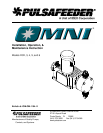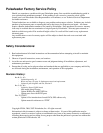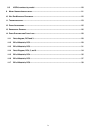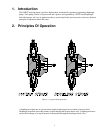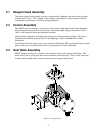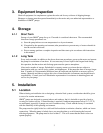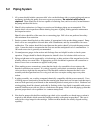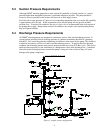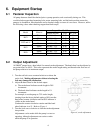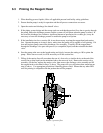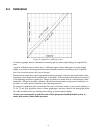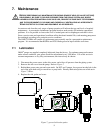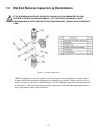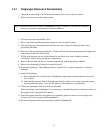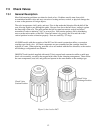3
3. Equipment Inspection
Check all equipment for completeness against the order and for any evidence of shipping damage.
Shortages or damage must be reported immediately to the carrier and your authorized representative or
distributor of OMNI
®
pumps.
4. Storage
4.1.1 Short Term
Storage of your OMNI
®
pump for up to 12 months is considered short-term. The recommended
short-term storage procedures are:
a) Store the pump indoors at room temperature in a dry environment.
b) If required by the operating environment, take precautions to prevent entry of water or humid air
into the eccentric enclosure.
c) Prior to startup, perform a complete inspection and then start up in accordance with instructions
in this manual.
4.1.2 Long Term
Every twelve months, in addition to the above short-term procedures, power up the motor and operate
the pump for a minimum of one hour. It is not necessary to have liquid in the reagent head during
this operation, but the suction and discharge ports must be open to atmosphere.
After twelve months of storage, Pulsafeeder’s warranty cannot cover items that are subject to
deterioration with age, such as seals, gaskets, and diaphragms. If the pump has been in storage longer
than 12 months it is recommended that these items be inspected and replaced as necessary prior to
startup. Materials and labor to replace this class of item under this circumstance are the purchaser’s
responsibility. Consult your local Pulsafeeder representative for assistance in obtaining parts and
service for your pump.
5. Installation
5.1 Location
When selecting an installation site or designing a chemical feed system, consideration should be given
to access for routine maintenance.
OMNI
®
pumps are designed to operate indoors and outdoors, but it is desirable to provide a hood or
covering for outdoor service. External heating is required if ambient temperatures below 0° C (32° F)
are anticipated, especially if pumps are not in continuous duty. Check with the factory if concerned
with the suitability of the operating environment.
The pump must be rigidly bolted to a solid and flat foundation to minimize vibration, which can loosen
connections. When the pump is bolted down, care must be taken to avoid distorting the base and
affecting alignments. The pump must be level within 5°. This will assure that the check valves can
operate properly.



